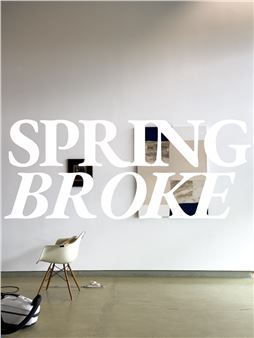Paris 1900 and Post-Impressionism. Signac and the Indépendants
Paris 1900: a revolution was underway during the Belle √Čpoque. ‚ÄúArt for all!‚ÄĚ declared artists who exhibited under the motto ‚Äúno jury, no awards.‚ÄĚ Cofounder of the Salon des Ind√©pendants, Paul Signac made a name for himself as the theoretician of the so-called ‚Äúpost-impressionist scientists.‚ÄĚ He applied pure colour to the canvas in tightly placed dots, such that the form would emerge from optical blending in the viewer‚Äôs eye. He sought to create an all-encompassing art, somewhere between the paradise lost of the golden age and social utopia. Signac championed positivist painting, which promoted technical and political modernity. The new pointillist style of his ‚ÄúNeo‚ÄĚ peers spread like wildfire from Paris to Brussels, glorifying the better days to come. Moreover, according to the writings of such critics as F√©n√©on, Signac positioned himself as an engaged intellectual in the era of the Dreyfus affair.
Discover a magnificent body of paintings and graphic works by Signac and the avant-garde, from Impressionists (Monet and Morisot), to Fauves (Dufy, Friesz and Marquet): Symbolists Gauguin, Mucha and Redon; Nabis Bonnard, Denis, Lacombe, Sérusier, Ranson and Vallotton; Neo-Impressionists Cross, Guillaumin, Luce, Pissarro, Seurat and Van Rysselberghe; and Paris life observers Anquetin, Degas, Lautrec, Picasso and Steinlen. This exceptional private collection is to be exhibited in its entirety for the first time.

Recommended for you
Paris 1900: a revolution was underway during the Belle √Čpoque. ‚ÄúArt for all!‚ÄĚ declared artists who exhibited under the motto ‚Äúno jury, no awards.‚ÄĚ Cofounder of the Salon des Ind√©pendants, Paul Signac made a name for himself as the theoretician of the so-called ‚Äúpost-impressionist scientists.‚ÄĚ He applied pure colour to the canvas in tightly placed dots, such that the form would emerge from optical blending in the viewer‚Äôs eye. He sought to create an all-encompassing art, somewhere between the paradise lost of the golden age and social utopia. Signac championed positivist painting, which promoted technical and political modernity. The new pointillist style of his ‚ÄúNeo‚ÄĚ peers spread like wildfire from Paris to Brussels, glorifying the better days to come. Moreover, according to the writings of such critics as F√©n√©on, Signac positioned himself as an engaged intellectual in the era of the Dreyfus affair.
Discover a magnificent body of paintings and graphic works by Signac and the avant-garde, from Impressionists (Monet and Morisot), to Fauves (Dufy, Friesz and Marquet): Symbolists Gauguin, Mucha and Redon; Nabis Bonnard, Denis, Lacombe, Sérusier, Ranson and Vallotton; Neo-Impressionists Cross, Guillaumin, Luce, Pissarro, Seurat and Van Rysselberghe; and Paris life observers Anquetin, Degas, Lautrec, Picasso and Steinlen. This exceptional private collection is to be exhibited in its entirety for the first time.
Artists on show
Related articles
The Montreal Museum of Fine Arts invites visitors on a journey to the artistic effervescence of France at the turn of the 20th century with its exhibition Paris in the Days of Post-Impressionism: Signac and the Independants.
















